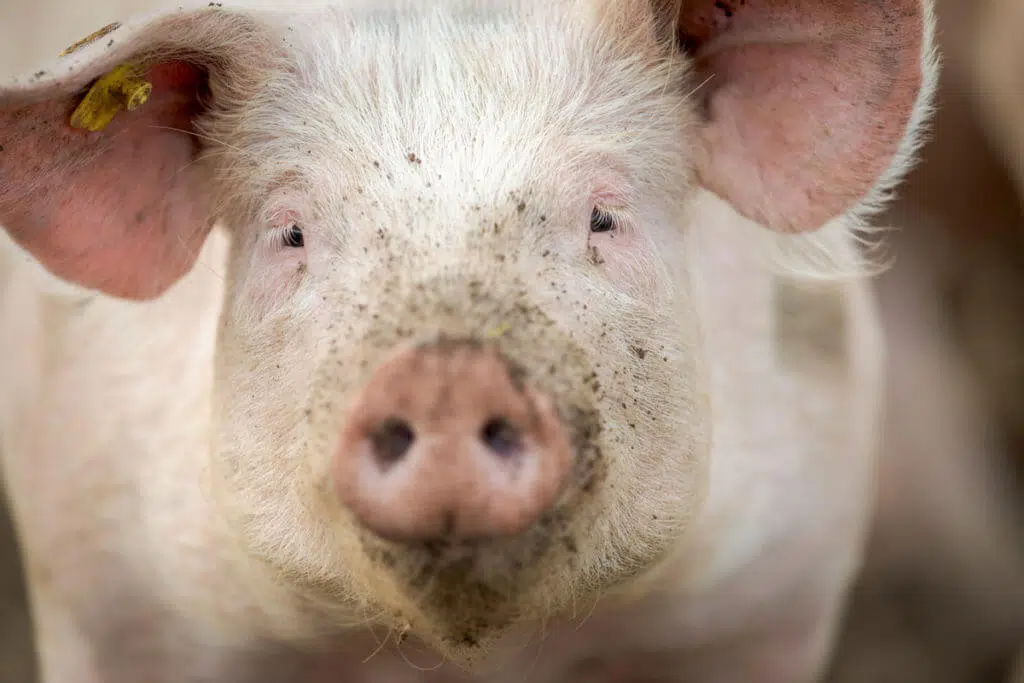The South African pig industry is no different from other pig industries in the world when it comes to sow lameness. The prevalence of sow lameness typically ranges from 6% in problem-free herds to up to 30% in problem herds. Lameness costs pig producers millions of rands in lost productivity.
The prevention of lameness is particularly important in young sows, as they will soon be the most productive animals in the herd, if lameness is prevented.
Local research
An ongoing local research project shows that more than three quarters of the sows assessed for lesion scoring had a lesion in more than one claw which, depending on the severity of the lesions, can lead to a high incidence of lameness. Of the 701 sows assessed at various abattoirs, 50% of sows had a score of 1, while 26% had a score of 2 or 3 (Figure 1).
A complex issue
Lameness is a multifactorial problem that can be caused by nutrition, management, environmental issues and genetic factors. Housing and flooring types, such as crates versus group housing, also have a significant impact on the prevalence of lameness. Rough concrete slats can damage claws and even tear off dewclaws or horn wall capsules.
Finally, little is known about how vitamins affect lameness. A biotin deficiency could, for example, favour the onset of lameness, because it is a vitamin considered essential for correct claw formation.
The lesions of greatest concern are those that penetrate the horn wall moving into the corium of the foot, where they cause an inflammatory response, such as sidewall cracks of the outer horn wall or white line lesions. Lameness is mostly the result of inflammation accompanied by pain.
Sows with chronic lameness frequently exhibit decreased feed intake, which tends to affect reproductive performance. Inflammation also causes other changes in the body, disrupting the way nutrients are utilised; it may even have an impact on ovulation.
Since the implementation of group housing in 2013, sows have been engaging in movement and competition activities more frequently. In group housing one can expect an increase in the removal of sows due to lameness, a consequent decrease in sow longevity and an increase in the costs this entails. Nutrition, including the re-evaluation of trace minerals in the diet, is one area that can be managed to try and compensate for a decline in longevity.
Trace mineral nutrition
Researchers are currently investigating on-farm solutions to help prevent lameness and improve animal welfare related foot problems. Interestingly, some research has shown that trace mineral mixes containing complexed zinc, manganese and copper can help improve sow claw health while contributing to the general welfare of the sows.
Trace minerals are required for the normal development and functioning of the body. They are essential for the metabolic, endocrine and physiological control of growth, reproduction and immunity. However, compared with the requirements for energy and amino acids, mineral requirements are not as well defined despite their importance to overall herd health and productivity.
Trace mineral requirements are difficult to establish. Estimates are generally based on the minimum amounts required to overcome deficiencies rather than to optimise productivity, or indeed to enhance immunity.
Most of the studies aimed at establishing mineral requirements in general, and trace nutrients in particular, were carried out pre-1990 and may not be relevant to modern sow genotypes with their considerably raised levels of productivity. For example, Newton and Mahan (1995) showed that there was significant mineral depletion from the bodies of sows after they had weaned their third litter of piglets, compared with non-bred animals of similar age that were fed the same dietary levels of inorganic minerals.
This suggests that the inclusion of inorganic minerals in the diet of modern hyper-prolific sows may not meet their needs; hence the interest in organic minerals. These are chelated minerals in which the trace mineral is chemically bound to a single amino acid. In this form the minerals are more available and bio-active, resulting in a significant metabolic and productive advantage.
Sows with chronic lameness frequently exhibit decreased feed intake, which tends to affect reproductive performance.
Read full articleMashilo Phosa is the Swine team lead at Chemuniqué










